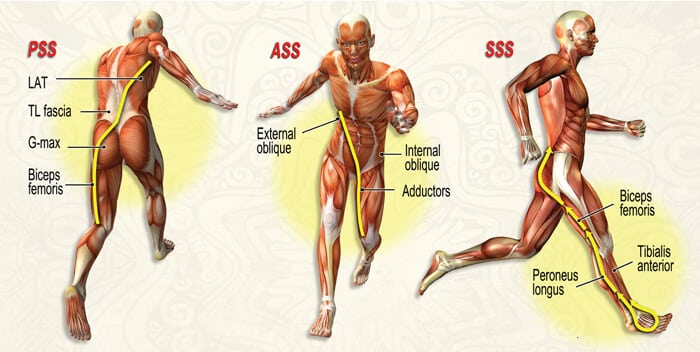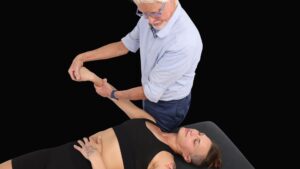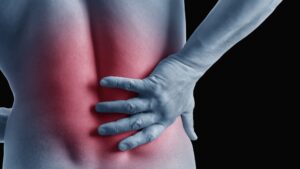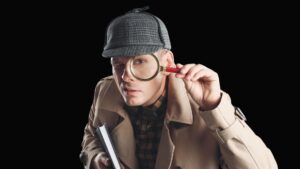May The Course Be With You…treating golf injuries

The Masters Golf Tournament certainly proved to be an entertaining event this year with Patrick Reed winning the “green jacket” by one stroke over Rickie Fowler. When I authored this article for my 2012 Dynamic Body text, Tiger Woods was the guy who was lighting all the tournaments. The spring weather here in Oklahoma is starting to bring with it a bunch of golf related injuries so I thought I’d revisit an excerpt from this golf chapter…. enjoy!
Massage and bodyworkers must have a good grasp of both muscle and joint biomechanics to effectively assess, treat and train sports related injuries such as low back spasm, rotator cuff strain, hamstring tendinopathies and SI joint strain. This chapter illustrates the immense stress placed on the musculoskeletal system from a seemingly simple act such as a golf swing.
In the right hands, the swing of a golf club can inspire awe. It is a complex whole-body movement that generates power to propel a golf ball great distances with extreme accuracy. In professional golfers, highly coordinated sequencing of muscle activation allows for a fluid and reproducible movement. This split-second swinging maneuver requires such precision and uses so many muscles that it’s no wonder the golfer’s body is a ticking time bomb for acute injury and chronic pain.
When professional golfers take the club head back, they turn their shoulders away from the target while keeping the pelvis relatively stationary. This motion creates torque, which leads to increased power. Then, throughout the downswing and follow-through, the pros’ hips lead the way. Amateurs, on the other hand, rotate their shoulders and hips almost in unison. “A golfer like Tiger Woods has very little hip rotation and a lot of upper torso rotation,” says Conrad Ray, head golf coach at Stanford University. “That’s how he’s able to create speed and distance.”
However, many professional coaches downplay the role of the hips in big-time swingers like Tiger Woods. Many believe the spinal rotator muscles are the primary factors in producing the type of power Tiger displays. No doubt, spinal rotation and core stability are very important features in golf swing execution, and vital to the prevention of overuse injuries. Yet, it’s difficult to envision how the body can produce enough spinal rotation to drive a ball 425 yards, as Tiger Woods did at the 2008 Mercedes PGA Championship.

How is such power possible? As functional training guru Gray Cook says, “Think movement – not muscles!” Tiger has developed a sophisticated whole-body musculofascial maneuver that allows him to drive a ball with surprising velocity. By viewing slow-motion You Tube videos, it appears that Tiger’s fast-twitch global muscles and elastic fascia work together to propel energy up the kinetic chain, while his slow-twitch deep spinal rotators act as stabilizers to store and release the energy.
Spring Systems

The secret to Tiger’s power lies in his highly refined musculofascial spring systems. To demonstrate how golf swing efficiency relies on these spring systems, we’ll borrow three slightly modified force transmission systems, first described by Andry Vleeming, Ph.D. – the stirrup spring system (SSS), posterior spring system (PSS), and anterior spring system (ASS).
During the backswing, right-handed golfers like Tiger lift the clubhead as far back as possible while maintaining weight on the right foot’s medial arch. As the arch flattens, the tibia internally rotates, which serves to help tighten the SSS. At the top of the backswing, muscles of the left ASS and left PSS eccentrically contract to slow the clubhead, and with help from fully tensed fascia, these muscles are pre-loaded and storing potential energy in preparation for the downswing.
As the two diagonal fascial springs reach their elastic barrier, the golfer’s deep spinal rotator muscles, spinal ligaments, and facet joints are also fully coiled. With the lumbar spine side-bent left and rotated right, energy is lightly, but securely, stored deep in the spinal engine and ready for release.
To initiate the downswing, instead of moving the body down to the ball, the golfer moves the hips forward toward the target. As weight shifts from right foot to left, the coiled lower body begins to unwind. The forward thrust of the left rotating pelvis produces an effortless and impressive release of stored potential energy. With the help of the deep spinal rotators, the golfer’s spinal engine continues to unwind, causing the shoulders, arms, and hands to powerfully drive the clubhead through the ball and then eccentrically contract to stop the swing’s momentum.
To prevent injury, golfers must possess a learned sequencing ability that allows them to contract and relax muscles fluidly and flawlessly. However, it is rare for humans to move one muscle at a time along a single plane. Modern neuroscience tells us the brain does not recognize individual muscle activities due to lack of practical purpose. Instead, the cerebral cortex maps movement patterns and coordinates the neuromyofascial net to meet the specific activity.
In motor learning of an athletic skill, such as a golf swing, the muscles develop a pattern after repeated physical motion. This pattern becomes ingrained in the brain so that, at any given time, the motion and mechanics of a golf swing can be recalled with success. The more the skill is practiced and perfected, the more heightened the muscle memory.
With a revitalized and functionally balanced body, joints and muscles operate at optimal levels of motor recruitment and synchronization. As motor learning of this complex grooved maneuver improves, so does the golf swing and, in turn, one’s love for the sport!

Learn more about our Lower Body Home-Study course.









